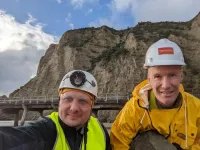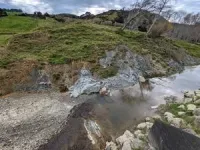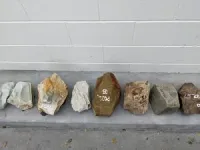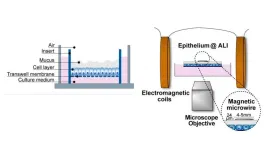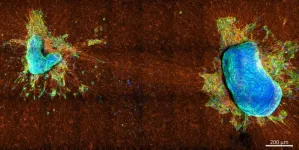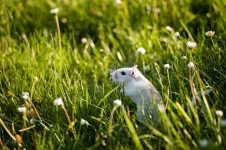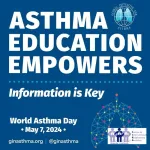(Press-News.org) Earthquakes are the most dramatic and noteworthy results of tectonic plate movement. They are often destructive and deadly, or at the very least physically felt — they’re literally groundbreaking geological events. However not all tectonic movement results in effects that humans can perceive.
Slow slip events occur when pent up tectonic forces are released over the course of a few days or months, like an earthquake unfolding in slow motion. The more gradual movement means people won’t feel the earth shaking beneath their feet and buildings won’t collapse. But the lack of destruction does not make slow slip events less scientifically important. In fact, their role in the earthquake cycle may help lead to a better model to predict when earthquakes happen.
In a paper published recently in Geophysical Research Letters, a Jackson School of Geosciences research group led by Harm Van Avendonk, Nathan Bangs and Nicola Tisato explores how the makeup of rocks, specifically their permeability — or how easily fluids can flow through them — affects the frequency and intensity of slow slip events.
In 2019 and 2022, the group traveled to New Zealand’s North Island to collect rocks from several outcrops near the Hikurangi Margin. This is a subduction zone off New Zealand’s coast where slow slip events occur routinely, about once a year. The researchers brought back a cache of rocks to UT, where they tested their permeability and elastic properties.
Their tests showed how pores in the rocks could control the regular slow slip events at this subduction zone. Previous studies have suggested that a layer of impermeable rock at the top of the descending tectonic plate serves as a sealed lid, trapping fluid in the pores of underlying rock layers. As fluid accumulates beneath the seal, the pressure builds, eventually becoming high enough to trigger a slow slip event or earthquake. This event then breaks the impermeable seal, temporarily fracturing the rocks, allowing them to soak up fluids. Within a few months, the rocks heal and return to their initial permeability, and the cycle starts all over again.
In studying this cycle, Tisato and other researchers tested rocks from nearby surface outcrops which were once part of the earthquake fault deep underground. Previous permeability studies have been performed only on loose sediments that have been consolidated into solid rock.
“We are showing for the first time, using rocks that are representative of those at depth, that permeability is controlling (slow slip events),” he said.
Laura Wallace, a researcher at the University of Texas Institute for Geophysics and GEOMAR in Germany, has been studying slow slip events for more than 20 years, and was the first person to record slow slip events occurring in the Hikurangi Margin. She said that this paper adds more data points to inform the time scales over which the fault zone permeability changes can take place, possibly influencing the observed slow slip event cycles.
“It adds some additional data constraints on how this fault-valve process might work, how fluid cycling could work at the subduction zone — if that’s indeed what’s driving the cyclicity of these things,” Wallace said.
The ultimate goal of this research, Tisato said, is to understand why earthquakes happen and to eventually build a convincing model that can even predict them, a code scientists have yet to crack.
He and graduate student Jacob Allen are currently analyzing rock samples from the center of the margin and testing for differences in permeability. The rocks at the northern end of this subduction zone are richer in clays than those at the southern end. Because clays are malleable and can accommodate a lot of water and other fluids, they are ideally suited to trap, fracture and channel those fluids. That could explain why slow slip events on the northern end of the subduction zone happen frequently, whereas they occur rarely on the southern end, Tisato said.
“We have to go through the exercise of understanding why in the north of the Hikurangi Margin there are slow slips, and why in the south of the Hikurangi Margin we have fewer slow slips,” Tisato said. “Because if we understand that, then we have an additional step to go towards the prediction.”
Three graduate students from the Jackson School of Geosciences also contributed to this paper: Carolyn Bland, Kelly Olsen, and Andrew Gase.
END
Researchers show that slow-moving earthquakes are controlled by rock permeability
2024-05-07
ELSE PRESS RELEASES FROM THIS DATE:
Seeking medical insights in the physics of mucus
2024-05-07
WASHINGTON, May 7, 2024 – As much as we might not want to think about it, mucus is everywhere in our bodies. It coats our airways and our digestive systems and serves as a first line of defense against pathogens, a habitat for our microbiomes, and a conveyor belt for our insides to keep everything moving smoothly.
The front-line role of mucus means it is often the site of the first symptoms of infection or disease. Understanding how mucus changes, and what it changes in response to, can help diagnose illnesses and develop treatments. Designing a study to measure the physical properties of mucus, however, is nothing to sneeze at.
In APL Bioengineering, by AIP Publishing, ...
Study sheds light on cancer cell ‘tug-of-war’
2024-05-07
WASHINGTON, May 7, 2024 – Understanding how cancerous cells spread from a primary tumor is important for any number of reasons, including determining the aggressiveness of the disease itself. The movement of cells into the extracellular matrix (ECM) of neighboring tissue is an essential step in cancer progression that directly correlates to the onset of metastasis.
In APL Bioengineering, by AIP Publishing, a team of researchers from Germany and Spain used a breast cancer cell line panel and primary tumor explants from breast and cervical cancer patients to ...
Social determinants of health and the availability of cancer clinical trials in the US
2024-05-07
About The Study: Substantial geographic disparities in cancer clinical trials availability exist throughout the United States, with the most socially vulnerable counties being far less likely to have any trial and having only a fraction of trials available, a disparity that has worsened over time.
Corresponding Author: To contact the corresponding author, Rishi Robert Sekar, M.D., M.S., email rsekar@med.umich.edu.
To access the embargoed study: Visit our For The Media website at this link https://media.jamanetwork.com/
(doi:10.1001/jamanetworkopen.2024.10162)
Editor’s Note: Please ...
Multilevel characteristics of cumulative symptom burden in young survivors of childhood cancer
2024-05-07
About The Study: The findings of this study suggest that symptoms are prevalent years after young childhood cancer survivors’ initial cancer diagnosis, and interventions to reduce caregiver anxiety and neighborhood adversity and improve resilience may alleviate symptom burden.
Corresponding Author: To contact the corresponding author, I-Chan Huang, Ph.D., email i-chan.huang@stjude.org.
To access the embargoed study: Visit our For The Media website at this link https://media.jamanetwork.com/
(doi:10.1001/jamanetworkopen.2024.10145)
Editor’s Note: Please see the article for additional information, ...
Why getting in touch with our ‘gerbil brain’ could help machines listen better
2024-05-07
Macquarie University researchers have debunked a 75-year-old theory about how humans determine where sounds are coming from, and it could unlock the secret to creating a next generation of more adaptable and efficient hearing devices ranging from hearing aids to smartphones.
In the 1940s, an engineering model was developed to explain how humans can locate a sound source based on differences of just a few tens of millionths of a second in when the sound reaches each ear.
This model worked on the theory that we must ...
It flickers, then it tips – study identifies early warning signals for the end of the African humid period
2024-05-07
The transition from the African Humid Period (AHP) to dry conditions in North Africa is the clearest example of climate tipping points in recent geological history. They occur when small perturbations trigger a large, non-linear response in the system and shift the climate to a different future state, usually with dramatic consequences for the biosphere. That was also the case in North Africa, where the grasslands, forests, and lakes favored by humans disappeared, causing them to retreat to areas like the mountains, oases, and the Nile Delta. This ...
Aquatic weed among ‘world’s worst’ expands in Northeastern US
2024-05-07
WESTMINSTER, Colorado – 7 May 2024 – An article in the latest issue of Invasive Plant Science and Management provides new insights on a northern hydrilla (Hydrilla verticillata) subspecies (lithuanica) and its establishment outside the Connecticut River. Considered among the “world’s worst” aquatic weeds, northern hydrilla hinders recreational activities by forming dense canopies. If unchecked, it has the potential to displace native species and host a bacterium that produces ...
Emergency department packed to the gills? Someday, AI may help
2024-05-07
UCSF-led study finds artificial intelligence is as good as a physician at prioritizing which patients need to be seen first.
Emergency departments nationwide are overcrowded and overtaxed, but a new study suggests artificial intelligence (AI) could one day help prioritize which patients need treatment most urgently.
Using anonymized records of 251,000 adult emergency department (ED) visits, researchers at UC San Francisco evaluated how well an AI model was able to extract symptoms from patients’ ...
Asthma education is key to reducing deaths worldwide, say respiratory health associations
2024-05-07
NEW YORK, NY - May 7, 2024 – On World Asthma Day 2024 the message is clear: "Asthma Education Empowers." The Forum of International Respiratory Societies (FIRS), of which the American Thoracic Society is a founding member, stresses the crucial role of education in empowering people with asthma to manage their condition effectively and to know when to seek medical assistance.
FIRS also urges health care professionals to enhance their awareness of the preventable morbidity and mortality from asthma and of the published evidence on effective asthma management, so they are equipped to provide reliable information and optimal treatment for their patients.
Asthma ...
60% of women with disabilities view cannabis as a ‘harmless’ drug
2024-05-07
A growing number of states and territories in the United States have legalized medical and recreational cannabis use. As such, recreational cannabis has been associated with a lower perception of risk of harm in the general U.S. population.
However, in women of childbearing age, evidence has shown that cannabis use may increase the risk of adverse reproductive and perinatal health outcomes. Furthermore, research on the perception of risk from using cannabis among vulnerable populations such as those with disabilities is lacking.
Using data from the 2021 National Survey on Drug Use and Health, researchers from Florida ...
